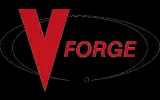Introduction
Aluminum die casting is a pivotal manufacturing process that involves the injection of molten aluminum into a mold under high pressure. Renowned for its efficiency and versatility, aluminum die casting stands as a preferred method for creating various high-quality aluminum parts. This technique not only ensures the production of robust and reliable components but also contributes to reduced manufacturing costs, positioning it as a superior alternative to traditional manufacturing methods.
High Integrity Parts
One of the primary advantages of aluminum die casting is its ability to produce high integrity parts. These components, also known as pressure-tight or fully-dense parts, are crucial in sectors where minimizing leakage and porosity is essential. Applications in the automotive industry, hydraulic systems, and pneumatic tools greatly benefit from the reliability of these parts. The process's ability to maintain consistency across production batches further enhances its appeal, ensuring that each component retains uniform density and structural integrity.
Pressure-Tightness
The high-pressure casting process inherent in aluminum die casting ensures that the components are devoid of internal voids and gas pockets. This characteristic is especially significant for parts required to withstand high pressures, such as engine blocks, transmission housings, and valve bodies, where any compromise in structural integrity can lead to catastrophic failures.
Structural Strength and Ductility
Die casting is particularly advantageous for manufacturing structural parts that require optimal mechanical properties. The produced parts exhibit high tensile and yield strengths, essential for load-bearing applications prevalent in automotive, aerospace, and industrial settings. Moreover, unlike other manufacturing techniques, die casting achieves a balance between strength and ductility, making the components resilient to cracking and deformation under stress.
Complex Geometries and Enhanced Physical Properties
This manufacturing method allows for the creation of parts with complex shapes and intricate details that would be challenging to achieve through other processes. Such flexibility is crucial for optimizing the structural performance and functionality of the parts. Furthermore, aluminum’s innate qualities such as excellent thermal conductivity make it ideal for applications requiring efficient heat dissipation, such as electronic housings and engine components.
Aesthetic and Corrosion-Resistant Finishes
The aesthetic aspects of die-cast parts are equally noteworthy. The process typically yields components with a smooth surface finish that can be further enhanced through techniques like polishing, painting, and anodizing. Such treatments not only improve the appearance but also bolster the parts’ resistance to environmental factors, making them suitable for use in harsh conditions, including marine and outdoor applications.
Cost-Effectiveness and High Production Rates
Die casting is recognized for its cost efficiency, particularly in high-volume production settings. The rapid production capabilities of die casting reduce the per-unit cost, making it economically viable for extensive manufacturing runs. Additionally, the precision of the process minimizes material waste, further enhancing its cost-effectiveness.
Reduced Secondary Operations
The near-net shape and excellent surface finish of die-cast parts often eliminate the need for additional machining or finishing, which can be costly and time-consuming. This reduction in secondary operations not only saves money but also accelerates the overall manufacturing timeline.
Sustainability and Environmental Impact
Aluminum die casting aligns with sustainable manufacturing practices through its focus on recyclability and energy efficiency. Aluminum is highly recyclable and can be reused with minimal degradation in quality, reducing the demand for raw materials and minimizing waste. Additionally, the energy required for recycling aluminum is considerably less than that needed for new material production, which supports efforts to lower carbon emissions and reduce the environmental footprint.
Applications Across Industries
The diverse benefits of aluminum die casting make it a versatile option across various industries. In the automotive sector, it aids in the production of lightweight, durable components that enhance fuel efficiency and performance. The aerospace industry values it for its ability to meet strict weight and strength specifications. Consumer electronics and industrial equipment manufacturers also rely on this process for its precision and durability.
Conclusion
Aluminum die casting offers a plethora of benefits, making it an invaluable manufacturing process for producing high-quality aluminum components. Its ability to create durable, structurally sound parts with desirable physical properties, coupled with cost efficiency, makes it a pivotal solution for a wide array of applications. By embracing aluminum die casting, manufacturers can achieve enhanced performance, aesthetic appeal, and economic efficiency, securing a competitive edge in the market. The environmental benefits further amplify its attractiveness, promoting sustainable production practices that are increasingly important in today’s industrial landscape.
For those considering aluminum die casting for their next project, the advantages are clear and the outcomes are reliably high-quality. Explore the possibilities with aluminum die casting and experience the benefits firsthand. For more information, visit www.vforge.com.





Comments